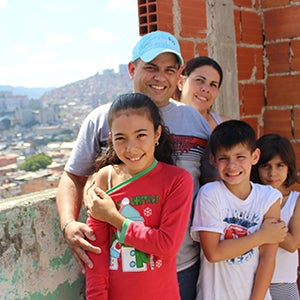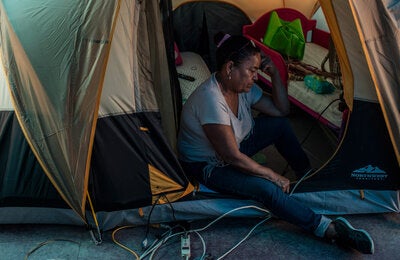
 Experts and officials from eight Latin American countries have met in Buenos Aires to revise a new strategy to enable broader vaccination coverage in large cities. In order to facilitate discussion, participants used the example of the DPT3 vaccine, which provides protection against diphtheria, whooping cough and tetanus, as a global indicator. In 2011, DPT3 coverage stood at 94%, a rate which dropped to 91% in 2015.
Experts and officials from eight Latin American countries have met in Buenos Aires to revise a new strategy to enable broader vaccination coverage in large cities. In order to facilitate discussion, participants used the example of the DPT3 vaccine, which provides protection against diphtheria, whooping cough and tetanus, as a global indicator. In 2011, DPT3 coverage stood at 94%, a rate which dropped to 91% in 2015.
Buenos Aires, June 2018 (PAHO/WHO) - Experts and officials from eight Latin American countries have met in Buenos Aires to revise a new strategy to enable broader vaccination coverage in large cities. In order to facilitate discussion, participants used the example of the DPT3 vaccine, which provides protection against diphtheria, whooping cough and tetanus, as a global indicator. In 2011, DPT3 coverage stood at 94%, a rate which dropped to 91% in 2015
During the meeting, attended by experts from Argentina, Bolivia, Brazil, Chile, Colombia, Ecuador, Haiti, Honduras, Mexico, Paraguay and Peru, the Pan American Health Organization (PAHO) highlighted that 50% of municipalities in the region had not achieved more than 95% vaccination coverage, an issue that is particularly prevalent in large cities, due to population density.
"One of the main issues with low vaccination coverage is the risk of imported outbreaks," said the Regional Vaccination Advisor for PAHO, Martha Velandia. "In Argentina, the number of municipalities with vaccination coverage of over 80% is falling, while the number of municipalities with coverage of between 50 and 79% is increasing."
Argentina currently boasts 157 municipalities with more than one thousand children, but according to Velandia, once the size of the municipality starts to grow, vaccination coverage begins to decrease. During the meeting, experts analyzed various factors that affect coverage, including mobility, the availability of health services and citizens' access to information.
Globally, DPT3 vaccine coverage has also come to a standstill at 86%, and in the region, 25% of municipalities have coverage of less than 80%.
The meeting was opened by Argentina's Undersecretary for the Control and Prevention of Communicable and Immune-preventable diseases, Miriam Burgos, who highlighted that vaccination coverage has become a challenge "for many countries," and welcomed the opportunity to discuss effective mitigationstrategies.
Communicable Diseases Consultant at PAHO/WHO Argentina, Tamara Mancero, agreed that although vaccination coverage has declined, other strategies to address health issues in big cities, such as tuberculosis for example, have been implemented.
During the meeting, participants shared lessons learned from other countries on improving vaccination levels among urban and suburban populations, as well as recommendations for the development of strategies to improve access to, and use of, vaccinations. Participants also identified effective strategies to improve vaccination levels in marginalized urban areas.
In September 2015, the Pan American Health Organization's 54th Directive Council approved the Regional Immunization Action Plan as a guiding framework for immunization in the Americas Region. This plan, which falls in line with the World Health Organization's Global Vaccine Action Plan, aims to advance progress and enable countries in the region to achieve vaccination goals.



